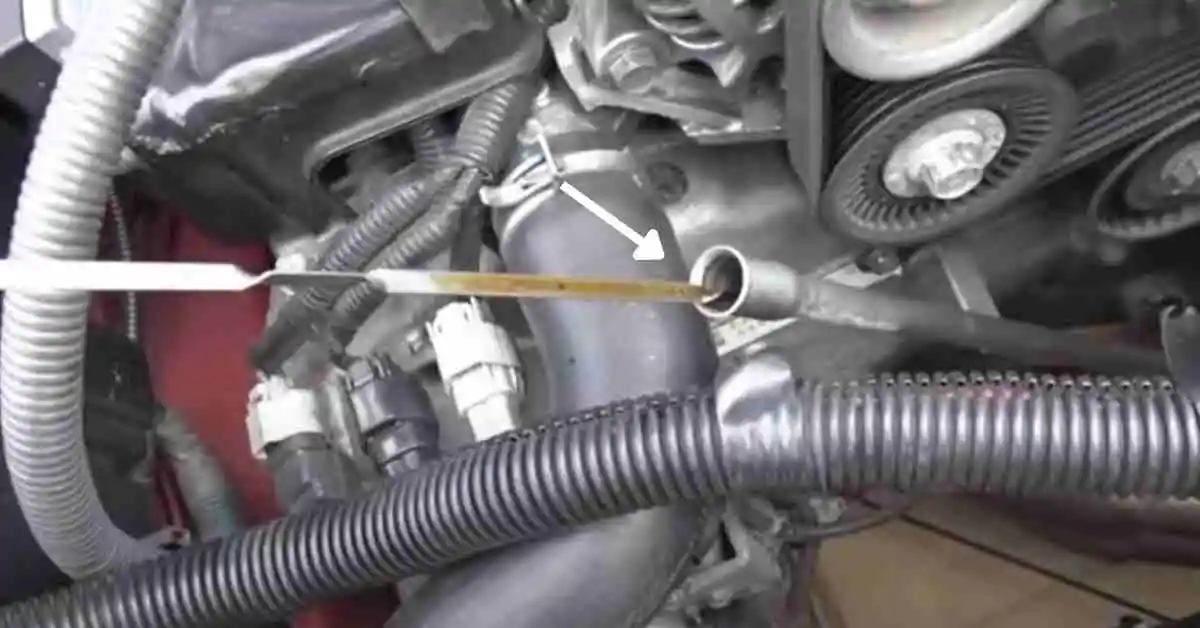It’s frustrating to drive your car after an oil change and experience unexpected shaking or vibrations. You anticipated smooth performance, but instead, your car feels off-balance or unsteady. If your car is shaking after an oil change, you’re not alone. Many drivers face this issue, and while it may seem confusing at first, there are several potential causes that could explain the problem.
The shaking is usually a symptom of underlying issues that either occurred during the oil change or were exacerbated by it. In this article, we will explore the most common reasons for Car Shaking After Oil Change, along with steps you can take to address the issue. Let’s dive into these causes and their solutions.

Common Causes of Car Shaking After an Oil Change
If your car is shaking after an oil change, there could be a number of causes, ranging from incorrect oil levels to issues with engine parts or sensors. Below, we’ll go over the most common reasons for this problem and what you can do to resolve them.
Incorrect Oil Level
One of the most common reasons for a car to shake after an oil change is an incorrect oil level. Whether the oil level is too high or too low, it can cause serious engine performance issues.
Too Much Oil: When there’s too much oil in the engine, it can cause foaming and aeration. This reduces the oil’s effectiveness as a lubricant, leading to pressure problems and potentially causing the engine to shake or vibrate.
Too Little Oil: On the flip side, not having enough oil in the engine can lead to insufficient lubrication, which can cause friction between engine parts. This lack of lubrication can result in rough idling and shaking.
What to Do:
Check the Oil Level: Use the dipstick to ensure that the oil level is within the proper range. If the oil level is too high or low, drain or add oil as necessary to bring it to the correct level.
Improperly Installed Oil Filter
Another possible reason for a rough engine or shaking after an oil change is an improperly installed oil filter. If the oil filter isn’t seated correctly or is loosely attached, it can cause issues with oil circulation, which may result in engine vibrations.
What to Do:
Inspect the Oil Filter: Ensure the oil filter is properly seated and tightened. Check for any oil leaks around the filter that could indicate an issue with installation. If the oil filter isn’t secure, it may need to be reinstalled.
Incorrect Oil Viscosity/Type
Using the wrong oil type or viscosity (thickness) for your engine can cause serious performance problems. Each engine requires a specific type of oil that matches its design and temperature requirements. If the oil viscosity is too thick or too thin, it can lead to poor circulation and engine shaking.
What to Do:
Confirm the Correct Oil: Check your owner’s manual for the recommended oil type and viscosity. Make sure you’re using the right oil for your car’s engine, as using the wrong oil can lead to performance issues and shaking.
Loose Parts or Damaged Connections
During an oil change, it’s possible that some engine components like covers, filters, or even wiring connections were disturbed or improperly reconnected. These loose or damaged connections can cause engine parts to rattle or shake, leading to unusual vibrations.
What to Do:
Inspect the Engine: Carefully check under the hood for any loose parts, covers, or wiring that might have been disturbed during the oil change. Make sure everything is properly secured, including any engine covers and electrical connections.
Faulty Sensors
Sometimes, the shaking could be a result of faulty sensors that were disturbed during the oil change. Specifically, the crankshaft or camshaft position sensors play a key role in engine timing. If these sensors are malfunctioning, they could cause poor engine performance, leading to shaking.
What to Do:
Scan for Diagnostic Trouble Codes (DTC): If you suspect sensor issues, it’s a good idea to scan your car’s computer for trouble codes. This can help pinpoint which sensors may need attention or replacement.
Misfire or Wiring Issues
A more complex issue that can lead to car shaking is a misfire caused by swapped or loose spark plug wires. If the wires were reconnected incorrectly during the oil change, it could cause an engine misfire, resulting in rough idling and shaking.
What to Do:
Inspect Spark Plug Wires: Make sure the spark plug wires are correctly connected. Check that the wires aren’t damaged or swapped during the oil change. If the wires are misconnected, this can cause poor engine performance.
When to Seek Professional Help
While many of the issues that cause your car to shake after an oil change can be easily fixed with some basic inspections, there are instances where professional help is necessary. If you’re unsure about diagnosing or fixing the problem yourself, or if the shaking persists after you’ve done everything you can, it’s time to visit a mechanic. Here’s when you should seek professional assistance:
When DIY Fixes Aren’t Enough
If you’ve checked the oil level, ensured the oil filter is properly installed, confirmed the correct oil type, and looked for any loose parts or faulty sensors but the car continues to shake, it may be time for a professional mechanic. Some issues, like a malfunctioning sensor or deeper engine problems, may not be easy to diagnose without the right tools or expertise.
Diagnosing and Preventing Further Damage
Mechanics have specialized tools, such as OBD-II scanners, to read error codes from your car’s computer. These codes can help pinpoint issues that may not be immediately obvious. If you’re dealing with a misfire, sensor malfunction, or other deeper engine issues, leaving these unaddressed could lead to more severe damage, resulting in expensive repairs down the road.
Preventing Long-Term Damage
Driving a car that shakes or vibrates can lead to more serious mechanical issues. For example, if an oil filter is improperly installed, it could result in a loss of oil pressure, which can damage your engine over time. Similarly, ignoring faulty sensors could affect engine timing and performance, leading to long-term engine damage.
Professional Diagnosis
Mechanics can thoroughly diagnose the issue and ensure your car is running smoothly again. By addressing any unresolved problems early, you can avoid more costly repairs and extend the life of your engine.
Regular Maintenance and Oil Change Practices
Staying on top of your car’s maintenance schedule is one of the best ways to avoid problems like shaking after an oil change. Make sure to follow the manufacturer’s oil change recommendations and ensure that all parts, such as the oil filter, are properly installed each time.
Double-Checking After an Oil Change
After any oil change, take a few extra minutes to double-check everything. Look under the hood to make sure all parts are secure, the oil filter is tight, and the oil level is correct. This will help catch any mistakes made during the service and ensure a smoother driving experience.
Routine Engine Inspections
Regularly inspecting your car’s engine can help identify small issues before they become big problems. If you’re unsure about how to check for issues like loose wiring, sensors, or oil leaks, consider scheduling regular inspections with a trusted mechanic.
Use a Reliable Mechanic or DIY
If you’re not confident in performing oil changes or other maintenance tasks yourself, always choose a professional mechanic you can trust. If you’re doing it yourself, be sure to follow all manufacturer guidelines to prevent errors.
FAQs About Car Shaking After Oil Change
Could My Car Be Shaking Because of an Oil Change?
Yes, it’s possible that the shaking is caused by something that happened during the oil change. Common causes include incorrect oil levels, improperly installed oil filters, or disturbed wiring or sensors.
Why Is My Car Driving Weird After an Oil Change?
Driving weird could be due to several factors, including issues like the wrong oil viscosity, loose parts, or a misfire caused by swapped spark plug wires. Each of these can affect engine performance.
Why Is My Car Shifting Weird After an Oil Change?
Although oil changes don’t directly affect the transmission, incorrect oil levels or other engine issues caused by the oil change could indirectly lead to shifting problems. It’s best to ensure your oil level is accurate and that no parts were disturbed during the oil change.
How Long Should an Engine Idle After an Oil Change?
After an oil change, it’s recommended to let your engine idle for 5-10 minutes. This allows the new oil to circulate properly throughout the engine and ensures the oil pressure is at optimal levels.
Preventing Car Shaking After Future Oil Changes
If you’ve had a rough experience with your car shaking after an oil change, you’ll want to avoid these issues in the future. Here are a few tips to help ensure smoother oil changes and keep your car running in top condition.
Conclusion
A car shaking after an oil change is a frustrating problem, but it’s often an easy fix if you know what to look for. By understanding the common causes—such as incorrect oil levels, improperly installed filters, or disturbed sensors—you can troubleshoot and fix the issue yourself. However, if the problem persists or if you’re unsure about the cause, it’s always best to seek professional help to prevent further damage.
With regular maintenance, careful checks after oil changes, and prompt action when problems arise, you can keep your engine running smoothly and avoid shaking or other performance issues. Always remember that taking good care of your car will save you time and money in the long run.
